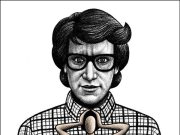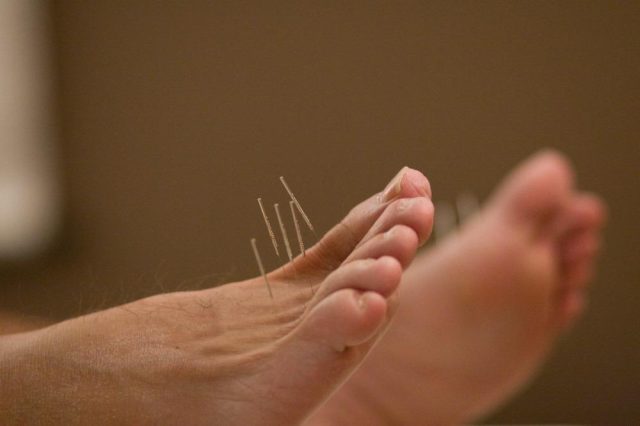In today’s fast-paced world, where the demands of daily life often leave us feeling overwhelmed and physically strained, the quest for effective pain management solutions has never been more critical. While modern medicine offers a plethora of treatments, many individuals continue to seek alternative therapies that address not just the symptoms but the root causes of their discomfort. Enter acupuncture, an ancient practice that has been providing relief for centuries. This article, “,” aims to guide you through the principles and practices of acupuncture, offering insights into how this time-honored technique can be a powerful ally in your journey towards alleviating pain. With an empathetic understanding of the challenges faced by those living with chronic pain, we will explore how acupuncture works, its benefits, and how it can be integrated into a comprehensive pain management plan tailored to your unique needs. Whether you are a long-time sufferer or someone exploring new avenues for relief, this article is designed to inform and support you in making empowered decisions about your health and well-being.
Understanding Acupuncture: Ancient Techniques for Modern Pain Relief
Acupuncture, a time-honored practice originating from ancient China, has been embraced by the modern world as a powerful ally in the fight against pain. This therapeutic technique involves the insertion of thin needles into specific points on the body, known as acupoints, to stimulate the body’s natural healing processes. Many individuals have found relief from chronic pain conditions such as migraines, arthritis, and back pain through acupuncture, making it an invaluable component of holistic pain management strategies.
How does acupuncture help in pain relief? The underlying principle of acupuncture is to balance the flow of energy, or Qi, through pathways in the body called meridians. When these pathways are blocked, it is believed that pain and illness can arise. By inserting needles into precise acupoints, acupuncture aims to unblock these pathways, thereby restoring balance and promoting the body’s ability to heal itself. Scientific research suggests that acupuncture may stimulate the release of endorphins and other neurotransmitters, which can help alleviate pain and improve mood.
- Non-invasive: Acupuncture is a minimally invasive treatment that offers an alternative to more aggressive interventions.
- Personalized treatment: Each session is tailored to the individual’s specific needs, allowing for a customized approach to pain management.
- Complementary therapy: Acupuncture can be used alongside conventional medical treatments, enhancing their effectiveness and reducing the need for pain medications.
For those seeking a compassionate and holistic approach to pain relief, acupuncture offers a pathway to rediscover comfort and enhance overall well-being. Embracing this ancient practice could open new doors to a life less burdened by pain.

Identifying the Right Acupuncture Points for Effective Pain Management
Acupuncture, a cornerstone of traditional Chinese medicine, is gaining traction in the modern world for its remarkable ability to manage pain. The key to its effectiveness lies in accurately identifying the acupuncture points, or “acupoints,” which are strategically located across the body. These points, when stimulated, can unblock energy pathways and facilitate the body’s natural healing processes. But how does one determine which points are right for pain management?
First, it’s crucial to understand the nature and source of the pain. Pain can be classified into categories such as musculoskeletal, neurological, or visceral, each requiring a different approach. An experienced acupuncturist will assess symptoms and pain patterns to tailor a treatment plan. Key acupoints often used for pain management include:
- LI4 (Hegu): Located on the hand, it is widely used for headaches and facial pain.
- ST36 (Zusanli): Found on the leg, it’s known for boosting energy and alleviating knee pain.
- SP6 (Sanyinjiao): Situated near the ankle, this point is beneficial for menstrual pain and digestive issues.
- GB20 (Fengchi): Located at the base of the skull, effective for neck pain and migraines.
Each individual’s pain is unique, and so is their response to treatment. A personalized approach is essential, as the body’s energy pathways, or meridians, can react differently based on one’s health condition and lifestyle. Regular sessions and open communication with a skilled practitioner can significantly enhance the therapeutic outcomes, leading to a more profound sense of relief and well-being.

Integrating Acupuncture into Your Pain Relief Routine: Practical Tips and Guidance
Incorporating acupuncture into your pain relief routine can be a transformative experience, offering a holistic approach to managing discomfort. Here are some practical tips to seamlessly integrate acupuncture into your life:
- Consult with a Professional: Before starting, ensure you consult with a licensed acupuncturist. They can provide a personalized treatment plan tailored to your specific needs.
- Set Realistic Expectations: Understand that acupuncture is not a one-time fix. It often requires multiple sessions to achieve noticeable results. Patience and consistency are key.
- Combine with Other Therapies: For enhanced results, consider combining acupuncture with other pain management techniques such as physical therapy, yoga, or meditation.
- Track Your Progress: Keep a journal of your sessions and note any changes in your pain levels. This can help you and your practitioner adjust the treatment plan as needed.
Embrace the journey with an open mind and remember that the goal is not only to reduce pain but also to improve overall well-being. With the right approach, acupuncture can become a valuable ally in your quest for relief.
Listening to Your Body: Personalized Approaches to Acupuncture Therapy
In the journey toward alleviating pain, the importance of tuning into your body’s unique signals cannot be overstated. Acupuncture, with its roots deeply embedded in traditional Chinese medicine, offers a personalized approach that respects and responds to these individual needs. The essence of this therapy lies in its adaptability, making it a profound ally in pain management.
Every individual’s experience with pain is different, and acupuncture acknowledges this diversity. Practitioners begin by assessing specific physical and emotional cues, crafting a treatment plan that is as unique as the person receiving it. This tailored approach ensures that the therapy not only targets the symptoms but also addresses underlying causes, fostering holistic healing.
- Understanding Your Pain: Acupuncture sessions often start with a comprehensive evaluation of your pain patterns, lifestyle, and emotional health. This initial assessment helps in identifying the root causes of discomfort.
- Customized Treatment Plans: Based on the evaluation, practitioners develop a personalized strategy, selecting specific acupuncture points that resonate with your body’s needs.
- Continuous Feedback: Throughout the therapy, practitioners encourage feedback to adjust and refine the treatment, ensuring optimal relief and comfort.
By actively listening to your body’s signals, acupuncture empowers you to engage in your healing journey, promoting not just relief, but a deeper understanding of your own wellness. This dynamic interaction between practitioner and patient forms the cornerstone of effective, compassionate care.








































